HERE
FOR
YOU
Find answers to your questions about making it as a designer.
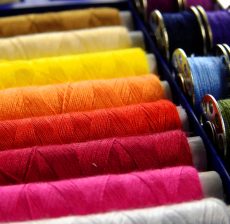
Starting a clothing line takes more than great design. To build a lasting business, you have to create garments that people really want to buy.
Above anything else, make sure to serve a tribe. What we mean by this is to focus on a specific customer base. Emerge yourself in this niche community to find out what they want. Then, identify a common need that, at present, is largely unfulfilled.
Sometimes, it helps to look at yourself first. For instance, have you ever had a problem trying to find a certain item of apparel? Do others share your frustrations? If the perfect product did exist, would you be willing to pay for it?
Your designs should both provide a solution and fit the lifestyle aesthetic of the tribe. This is whether your idea is to create stylish, comfortable workout gear for pre-natal mothers or a line of graphic tees for rap music lovers.
Zooming in on a clear subset of a particular market demographic makes it easier to research emerging trends, competitors, price points and the quality customers expect. Ideally, look for a growing segment where demand is high, but supply is low.
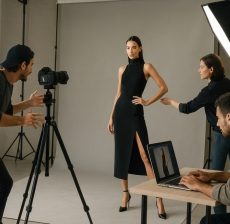
Formal education aside, an apprenticeship can be a great choice for new designers.
Look to develop your skills through hands-on internships and positions in the industry. For example, getting a job with an apparel manufacturer or working alongside an established designer are good options.
You might also be able to volunteer your services for fashion shows in exchange for the on-the-job training and experience.
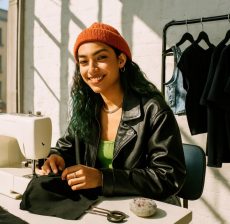
Clothing designers have to combine practical knowledge about fabrics and manufacturers with artistic ability.
To attain that knowledge, some aspiring designers choose to attend a fashion school or join a professional course that may teach design, sketching, sewing, textiles, procurement and production.
However, you do need to find a reputable school that offers the perfect programme in line with your goals and expertise. Choosing the right school is as important as picking the right course. Start by searching online for suitable options.
Should fashion school not be for you, it is possible to teach yourself the basics of clothing design at home. Digital platforms like Sew It Academy, Udemy, Skillshare, Coursera, Domestika and Masterclass all offer courses from drawing and sewing to pattern-making and construction.
Another idea is to check for low-cost programmes in or around your neighbourhood. Are there any beginner workshops at your local community centre? Can you join classes or talks at nearby art clubs, craft studios, fashion collectives or sewing groups?
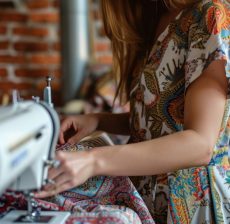
Our answer to this question is a bit controversial. Traditionalists in the industry might say ‘yes,’ but from our own experience, the answer is ‘no.’
Chances are as your brand grows, you will, in all likelihood, recruit or outsource for various roles. For example, if you don’t have the expertise yourself, you can hire a pattern-maker, cutter or seamstress.
Likewise, you may be able to work with an atelier or manufacturer to handle sewing, grading and production for you. (Note: an atelier is a fashion design studio or workroom that crafts garments. Grading entails resizing and creating extra sizes from your sample).
It’s not uncommon to find creative people behind clothing brands who tend to be good at coming up with concepts for apparel lines, but who then work with freelancers and external teams to take their vision from ideas to garments.
Should this be you, be mindful that it pays to have some knowledge of the industry. To illustrate, it’s helpful to have an appreciation of fabric construction and the process of production. If not, you could have to seek advice from a pro or someone better versed.
When outsourcing, having skills in delegation and communication are also handy. The more effective you are at articulating your vision, goals, quality requirements and timelines, the easier it will be for others to understand and meet your expectations.
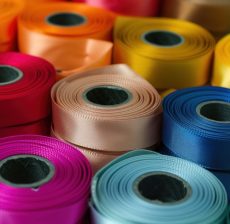
This is an exciting step!
Put simply, a garment sample is a prototype of your design. The reason for making a physical mock up is to check how your item of clothing will look, fit and feel once it is produced.
Sampling is a key stage in the design process. Ideally, you want a sample maker with expertise in the type of product you’re creating. This could be a factory that offers sampling, a specialist sample-making service or an independent sample maker.
Before anything else, check their credentials and experience. When hiring a sample maker, questions to ask include:
- How long have you been doing this?
- Can you name some of your customers?
- Where can I see examples of your work?
- What fabrics do you offer?
- What’s the average lead time to produce a sample?
- How much do you charge?
- Will I have to pay for extra changes?
- What are your payment terms?
- Do you only provide sample services or can you handle production?
Expect your initial sample to show up flaws. Your test product will likely uncover imperfections. From stress points and drag lines to issues with unsuitable fabric choices, sampling helps to catch such mistakes before production.
Given this, it’s probable to work through several rounds of sampling to perfect your garment. Not only that, but ask your sample maker to run mock ups in each of your chosen colour shades to make sure outcomes are as envisaged.
If you’re happy with you’re prototype sample, you can move onto grading and produce fit samples for each of the sizes you will offer.
The final step is a production sample made exactly how your product is to be manufactured. Production samples are great as you can use them for early marketing activities from pre-orders and merchandising to photoshoots and promotions.

You can source fabric from a variety of places. This includes the following:
Fabric Mills
First up, you can source materials directly from the manufacturers that produce them. Although quality and price per yard might sound favourable, be aware that textile mills often require higher minimum order quantities (MOQs).
Wholesale Distributors
Wholesale distributors buy fabric in large volumes from manufacturers and resell them in lower bulk quantities and prices. In turn, they may offer you more flexibility when it comes to minimum orders, but still offer a varying range of materials.
Jobbers
Jobbers take leftover supplies from mills and factories and offer them at reduced prices. This option tends to be better if you’re designing a limited collection as jobbers don’t always restock sold out fabrics making some materials difficult to reorder.
Converters
Converters take unfinished goods from producers that they dye, print, pleat, embroider or bead before re-market. As converters may provide custom services, you can consider them if your line calls for varying colours, prints and finishes.
Trade Shows
You can explore different material choices by visiting trade events like Premiere Vision or Texworld. Many textile companies have representatives at these shows with whom you can network and make fabric comparisons.
Online Marketplaces
Nowadays, it’s easy to source fabrics through online marketplaces like SwatchOn, Fibre2fashion and Alibaba. Serving as digital textile libraries, you can browse their directories, ask for samples and negotiate with fabric vendors.
Agents and Intermediaries
If you need assistance to approach overseas suppliers, you can consider appointing an agent. These intermediaries will help you identify suppliers, negotiate prices, manage quality and arrange shipping for which they may charge a commission.
Retail Fabric Stores
Retail stores typically are better suited to small-scale designers, home sewers, hobbyists and students. Despite fabrics being instantly available and outlays minimum, take note that it might not be possible to replenish supplies or order higher volumes.
With regards to fabric sourcing, you can request swatches and swatch books. Fashion swatches are material samples that allow you to review a fabric’s weight, texture, colour and finish before you place your order.
It’s a good idea to conduct performance tests on shortlisted fabrics to evaluate their quality. Run multiple wash and dry tests, check for shrinkage and expansion, as well as if the fabric holds it colour and shape after it’s laundered.
Incidentally, some textiles carry an OEKO-TEX or GOTS which are industry standard quality certifications.
What’s more, don’t forget to check a fabric’s GSM (thickness and weight in grammes) and fibre makeup to ensure it is suitable for the activity. If buying fabric by the roll, ask about the cuttable width and total so you can calculate how much is needed.
You can then move on to discuss order quantities, pricing, timelines and delivery details with your chosen vendor. Remember that it’s wise to place a smaller initial order to assess the dependability of your supplier before you agree to a larger volume.
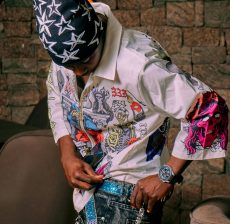
This is a popular question given the majority of hopeful designers lack the funds to spend on large volumes.
If that’s you, don’t worry. In recent times, there’s been a rise in what is called small batch production. What this means is you can produce your garment in smaller quantities as low as 10, 20 or 100 pieces per style, in comparison to traditional large-scale manufacturing that would insist on minimum orders of at least 500 or 1000.
In turn, small scale production may provide a solution for niche or emerging designers. One benefit is that it enables you to take designs to final piece without having to commit significant funds into your initial inventory.
So, this begs the question, how do you find a small batch manufacturer? Well, as this lower volume production usually takes place in smaller factories, ateliers and workshops, here are things to keep in mind when trying to identify a potential manufacturer.
- It’s not uncommon for small batch producers to specialise in different types of garments from underwear to sportswear. It helps to be aware of this so you can focus your search on the right kind of supplier.
- You can start researching online via platforms like ThomasNet, Maker’s Row and Kompass. These websites will suggest manufacturers based on your region, product type and sector.
- Recommendations often come through word and mouth so work to build a good network. Join fashion events, business networks and associations. Ask your industry contacts for their recommendations and referrals.
- A good way to make connections is to visit trade shows. Check if any small batch manufacturers are among the exhibitors. If so, arrange to meet them to discuss your brand’s requirements.

There are many variables in garment design. However, we would say the absolute minimum to get going is at least USD 1,000. Starting with this sum will allow you to make a handful of clothing designs, along with some samples.
That being said, many factors can influence startup budgets. Not least your apparel quality and if you plan to order stock or go down the print-on-demand route (POD) route. What’s more, marketing activities from designing a logo and spending on photoshoots to social media drops and promotional events can all add to the expense.
It’s therefore no surprise that if you’re creating more complex designs or custom collections beyond the scope of POD products like tees and hoodies, you can expect to spend anywhere in the region of USD 10,000 – USD 25,000.
In fashion, costs can quickly mount so make sure to map out an itemised budget to get a clearer picture of the likely investment.
Without compromising on quality, you should also try to keep costs lean. To illustrate, could you start small with a few key items? Search on Fiverr for more affordable talent? Use a free Shopify website template? Or, save money by asking friends to model?
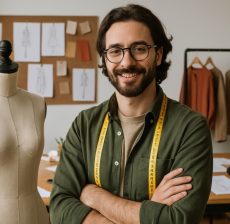
In part, it comes back to the niche that you’re designing for…
Whether its luxury or streetwear, you want to take a closer look at your target customer. Try to get an idea of how much the consumer can afford and what they usually spend on items of clothing similar to yours.
You can find clues by researching how much your competitor’s charge. Maybe even ask yourself, “how much would I prepared to pay if I was purchasing my product?”
Before setting a price, make sure to take your expenses into account. In other words, it’s important to get a grasp of how much each of your pieces cost to make.
To calculate this cost per unit, simply add up all your expenses like overheads, materials, labour, samples, packaging and shipping etc., then divide by the total number of pieces.
Of equal importance is not to undervalue your work as you figure out your pricing. This is especially since you need to add a mark up to your cost per unit to make a profit.
Be aware there are different tiers of pricing to consider depending on your sales channels. For example, many brands start out by selling direct to consumers through their own e-commerce site or pop-up stores. Another way to sell your line is through a wholesaler that gives your brand exposure in their retail stores.
Naturally, if you sell direct, profit margins tend to be higher as there’s no middleman. In this case, it’s a good idea to aim for a profit margin of 60-70% to ensure you earn a sufficient amount.
Expect for your margins to be more like 25-50% if you sell to a retail store. In fact, if you sell to retailers, the norm is to offer a wholesale price. This figure will be lower than the price the retailer will charge their customer to allow the store to make a profit.
On the contrary, the amount a retailer charges a customer is called the retail price. In simple terms, the retailer’s profit is the difference between the wholesale and retail price. (Scroll below for an example).
The point here is you must build all margins into your pricing, even if you initially plan to sell direct yourself to customers.
As it’s possible you might explore retail opportunities in the future, it’s best to factor in all margins from the get-go to ensure both sales channels are profitable.
Just so you know, it’s not unusual in a professional environment for bigger brands to actually set their prices before they start designing. From the onset, they are aware of the price, volumes and financial breakdowns for each style.
This makes it easier for their design teams to create pieces that suit the quality expectation of the price point. In addition, it provides an indication of the budget available to spend on garment construction that is a helpful when negotiating with manufacturers.
Over time, take note your expenses might increase, particularly if you intend to scale, expand you team or select better fabrics. Reviewing your prices regularly will help you to stay on top of your financial picture and make incremental adjustments if you need to.
PRICING EXAMPLE
Let’s say you plan to offer sweatshirts to customers both through your own e-commerce site and a retailer.
Suppose you’ve calculated that the cost per unit to make for each sweatshirt is USD 12.5, a good rule of thumb is to multiple this figure by 4 to 6 to arrive at your price.
It means that you’d sell the sweatshirts directly through your website at a price of at least USD 50 (e.g. 12.5 x 4).
The formula is slightly different to calculate your wholesale price to the retailer. Industry practice is to take the cost per unit and times it by 2 to 2.5.
This would make your wholesale price to the retailer around USD 25 per sweatshirt. (e.g. 12.5 x 2).
Be advised that the retailer will add their own mark up to make a profit.
For the purposes of illustration, if the retailer sells the garment at the same USD 50 retail price as on your site, they will make a 50% margin.
However, let’s dive deeper into this…
Based on the above, if your cost per unit is USD 12.5, your profit margin per piece sold through the retailer is 25%. Numerically, this works out at USD 12.5 profit per item. (e.g. the wholesale price of USD 25 minus your cost per unit of USD 12.5 = USD 12.5 margin).
Comparatively, the profit margin for sweatshirts you sell directly through your own e-commerce site is USD 37.5. (e.g. the price of USD 50 minus the cost per unit of USD 12.5)
Obviously, the margin from selling direct though your own channel is higher, although selling through a third party retailer may bring such benefits as greater awareness and marketing reach.
Another point to note here is that retailer marks up vary from store-to-store.
For the purposes of our example, we’ve noted a 50% retailer margin. (e.g. your wholesale price of USD 25 x 2 = USD 50 retail price).
In reality, garment retailers could mark up the wholesale price further, quite often multiplying this figure by 2.2 or 2.5.
It is why it’s vital to calculate prices across all sales channels to ensure you can make a profit, while remain competitive.
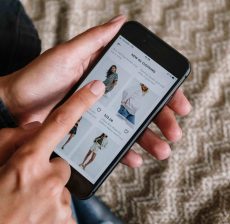
In recent times, growing numbers of new brands are starting with e-commerce.
If you’re interested to sell online through your own digital store, platforms like Shopify offer a wide range of user-friendly, e-commerce solutions.
Once you’ve started to build a following, you might wish to consider some complimentary in-person sales through pop-up stores.
Done correctly, pop up stores and events around specific targeted communities can be a great way to spread awareness.
In most cases, it’s better to wait before setting up a physical store or trying to negotiate retail partnerships. The reason is that upfront expenses tend to be more costly.
If you do sell online, don’t forget it’s vital to produce content, have a strong social media presence and be active with digital marketing to drive sufficient traffic to generate sales.
Put another way, you might have the best clothes in the world, but if you don’t post anything or tell anyone, no one will ever know about it.
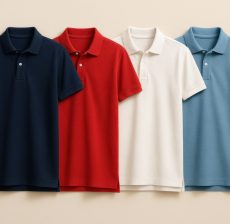
Print-on-demand (POD) is an e-commerce model where your clothing designs are only made once a customer places their order.
A third party partner like Printify or Printful generally will handle the garment’s production, packing and delivery on your behalf.
In fact, you even can link the above POD channels with any Amazon, Shopify or Etsy accounts for seamless storefront listing and sales order management.
Given this, POD frees you up to focus on the creative side of your business. An upside is you can avoid hefty outlays as you don’t have to produce stock or hold inventory.
Broadly speaking, POD works best for apparel products such as t-shirts, hoodies, caps, sweatpants, active and children’s wear.
To produce the garment, suppliers might use a digital printing technology called DTG (direct to garment) where inkjet printers spray your design directly into the fabric.
Another option is DTF (direct to film) where designs are printed onto a plastic carrier then heat applied onto the item of clothing.
Either way, both methods provide durable results. All you have to do is select from a wide range of custom products and submit your digital artwork file.
Another value add of POD is you can order product samples. This allows you to check the quality, wear and washability of the garment before placing a larger order.

The fashion industry has of late been going through a transformation. This transition is in response to reports that have surfaced regarding the industry’s harmful impact.
From labour exploitation to environmental damage caused by pollution and excessive waste, there’s a push for the industry to clean up its act.
In parallel, the call for safer working conditions and responsible environmental practices is being fuelled by the rise of eco-conscious shoppers and a shift in market demand towards ethical fashion.
As a result, the aim of the sustainable fashion movement is to lessen the damaging impact of the industry on the environment and community.
Translated, we’re seeing growing numbers of designers adopt a socially conscious approach. Practices range from the sourcing of more eco-friendly materials and fairer labour policies to waste reduction, recycling and repurposing.
You therefore can adopt these principles should you wish to build a sustainable fashion brand. If so, it’s best to weave social responsibility into the fabric of your business from the outset so it becomes an integral part of your brand values.

JEM’s Ruling the Runway campaign serves as a platform where anyone who is thinking to start their own clothing label can access information, support and guidance.
The aim of the campaign is to help up-and-coming designers bring their visions to life and launch their fashion brands.
Often the hardest part of any new creative journey is taking the first step.
Ruling the Runway gives emerging talent a chance to shine by equipping newcomers to the industry with the knowledge and confidence to make that first move.
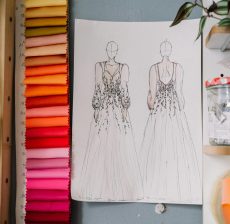
Are you ready to create your garments and set new trends?
If so, here’s some places and If so spaces to find more support and information.
You might also like our ‘Hit Lists.‘ They’re compilations of our favourite resources for fashion designers from books and courses to textile directories, events, e-commerce storefronts, gifts and much more.

